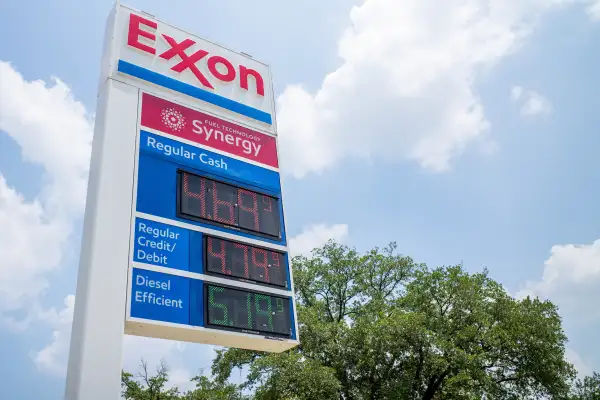Gas Prices Have Now Officially Fallen for 30 Days Straight

Drivers, start your engines: The average price of a gallon of regular gasoline is now $4.60, according to auto club AAA. That’s 40 cents less than a month ago, when average prices peaked above $5 per gallon. The price also reflects the 30th consecutive day of declines.
AAA data from earlier this week shows that Texas, Ohio, Illinois and California are among the states seeing the largest declines in gas prices.
“Those savings are providing important breathing room for American families,” President Joe Biden said in a statement on Wednesday. Biden noted that the sharp fall in prices was not reflected in this week’s eye-watering inflation report, which showed prices rising 9.1% on an annual basis in June, because of the dates the data covered.
The surge in gas prices earlier this year, prompted by the Russian invasion of Ukraine, limited oil refinery capacity and other factors, has been one of the major drivers of inflation in the United States. But now, drivers finally are seeing some much-needed relief at the pump.
Why are gas prices falling?
A modest increase in the supply of oil and gasoline in the U.S. has eased pressure on prices. Patrick De Haan, head of petroleum analysis at the price-tracking website GasBuddy, tells Money in an email that much of the recent decline in gas prices is attributable to that “minor improvement.”
Put simply, inventory rises as demand falls. On top of that, the Biden administration has been releasing oil from the U.S.'s strategic reserve to help with the crunch.
Gas prices are also closely tied to wholesale prices for crude oil, which have fallen from $120 per barrel in March to around $100 per barrel today. The oil market is volatile, but concerns over a global economic slowdown have made investors nervous. “Less expensive oil usually means less expensive gas,” AAA spokesperson Andrew Gross said in a blog post on Monday.
The growing fear of a recession, De Haan says, has also reduced oil consumption as Americans cut back on their spending.
Where are gas prices headed next?
De Haan says it’s possible that prices could keep falling “barring unforeseeable disruptions, like hurricanes or refinery problems.” He projected that the average price of gasoline could fall to $3.99 per gallon by mid-August, in the absence of unexpected factors.
The U.S. Energy Information Administration is forecasting that gasoline prices will average $4.05 per gallon for the entirety of 2022. Given how high prices were in the first half of the year, that would mean significant declines in the months to come.
Of course, that doesn't mean you'll be able to fill up on cheap gas at every single station in the nation. Prices vary widely at the local level. The average price of a gallon of gas in Utah is $5.14, according to AAA, compared to $4.14 in Texas.
But the national trend is still downward — and depending on where you live, you might be eligible for additional relief from your state. California is sending state stimulus checks in the coming months to help battle inflation, for instance, and Florida has a plan in place to suspend state gas taxes in October.
More from Money:
Why Gas Prices Could Soon Plunge
